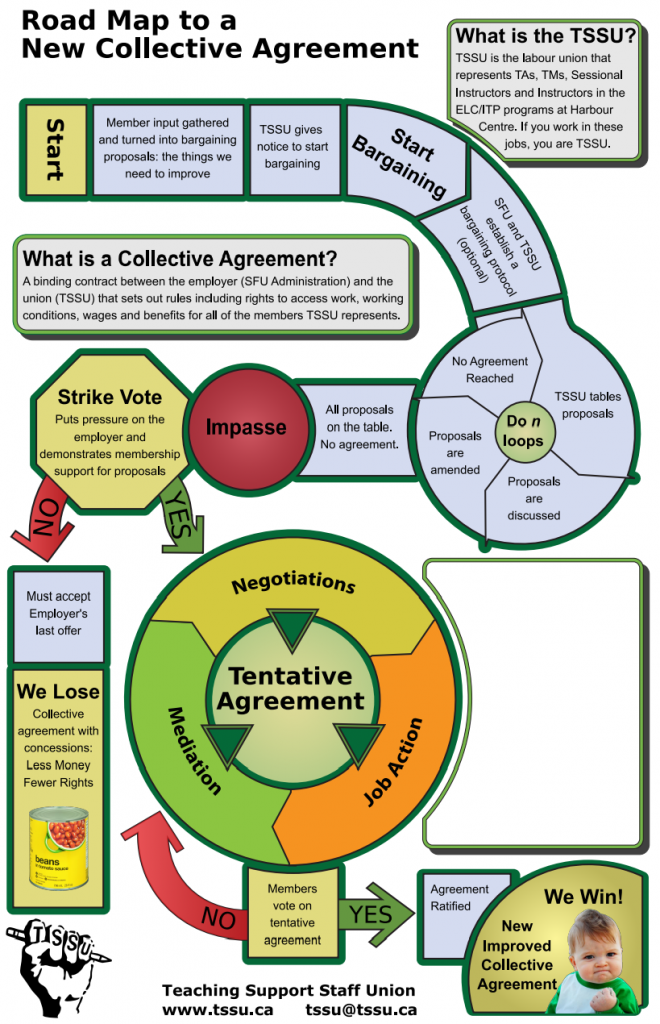What is bargaining?
Collective bargaining is one of the ways that we improve our working conditions! A Collective Agreement (CA) is a single contract that limits the rights of management and guarantees pay and other compensation for workers in the union. Bargaining is an expression of collective power that gives employees power in the workplace who individually would be limited. Practically, bargaining involves two parties proposing to change the Collective Agreement, and using their relative power to pressure the other side to agree, or find other, mutually agreeable proposals. This agreement is legally enforced through the grievance procedure, labour law, and the courts, but the power to enforce our contract ultimately comes from our members.
How does bargaining work?
The parties to the collective agreement, the Union and the Board of Governors, establish and empower committees who develop proposals, meet to discuss them, and negotiate a Collective Agreement. Past experience at SFU has shown that the employer does not negotiate until pressure from outside of the bargaining table forces them to. Pressure from the SFU community and our members is what wins agreements.
The bargaining process typically begins with the parties discussing “non-monetary proposals” which change the collective agreement but do not add a direct monetary cost for SFU Administration (e.g. creating a central posting system). Both sides present their positions and potentially modify them to reach agreement. Once the parties have canvassed non-monetary items, it is customary to start discussing monetary items, such as wage and benefit improvements.

Bargaining to Job Action
Once all monetary and non-monetary proposals have been discussed, and no agreement has been reached (Impasse), then the Union can choose to take a strike vote. A positive strike vote gives the Union members the right to serve strike notice and to begin job action. Job action is any collective action which affects the labour demanded by the employer; it can range from refusing overtime to putting stickers on assignments or forming picket lines. TSSU has a strike policy which outlines the decision-making process in a strike, and the use of the strike fund.
In the time leading up to job action and during job action, it is critical that members know what they’re fighting for and are prepared to take collective action to achieve. During this period, the focus of the Union has to be on talking to members, inoculating them against the employer, empowering them to fight for the changes to the Collective Agreement we need.